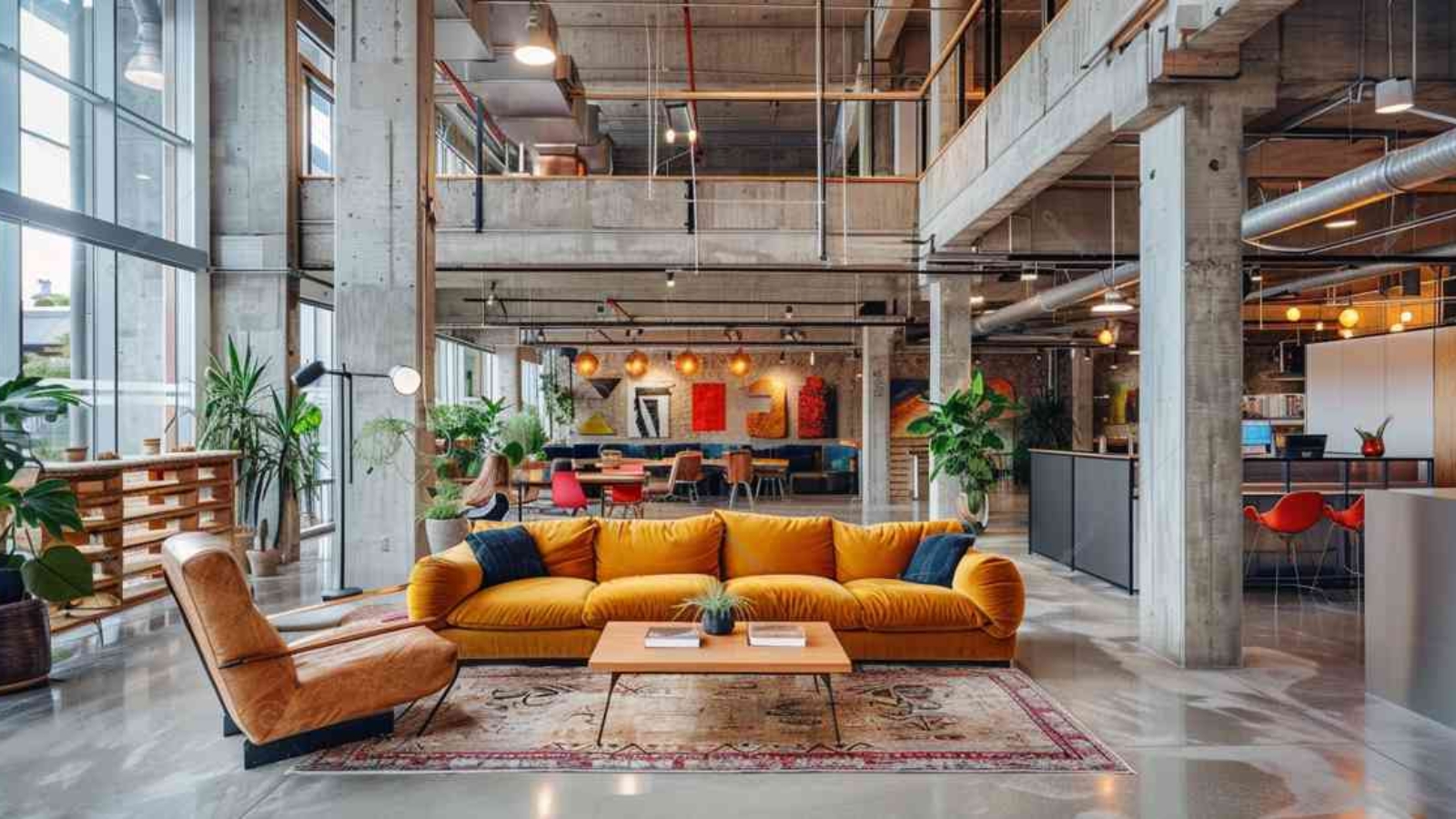In this insightful article, we delve into the fascinating intersection of Art Deco architecture and modern interior design, highlighting how the opulent and geometric elements of Art Deco are being seamlessly integrated into contemporary spaces. Through the utilization of advanced 3D modeling tools like ArchiCAD and SketchUp, designers are reviving this lavish style in everything from luxurious restaurant interiors to minimalist residential settings. By exploring sustainable design practices and human-centered approaches, the article demonstrates how Art Deco’s rich motifs and vibrant aesthetics are being adapted by modern architects and designers to meet today’s architectural trends, ensuring both historical appreciation and innovative application in the field of interior design.
Introduction
Art Deco architecture, once the epitome of luxury and sophistication in the early 20th century, is experiencing a remarkable resurgence in the realm of modern interior design. Known for its bold geometric shapes, lavish ornamentation, and rich materials, Art Deco has transcended its classical boundaries to influence contemporary design trends across the globe. Today, interior designers and architects are blending these timeless Art Deco elements with modern design principles to create unique, eye-catching spaces that bridge the past and present.
This article discusses how integrating Art Deco aesthetics with modern interior architecture enhances design innovation. Using 3D modeling tools like ArchiCAD and AutoCAD, designers blend Art Deco’s opulence with modern minimalism. This influence spans from upscale restaurant interiors to detailed plans for custom homes. By focusing on sustainable materials and human-centered design, interior designers adapt these timeless styles to meet contemporary needs, keeping Art Deco relevant in today’s dynamic design landscape.
Historical Overview of Art Deco Architecture
Art Deco, a term derived from the Exposition Internationale des Arts Décoratifs et Industriels Modernes held in Paris in 1925, represents an era of design that embraced luxury, technology, and modernity. Initially, a response to the austerity imposed by World War I, Art Deco architecture and design emerged as symbols of prosperity and technological advancement. With its geometric motifs, symmetrical forms, and exotic materials, Art Deco quickly distinguished itself from earlier styles, such as Art Nouveau, by adopting a more streamlined and simplified aesthetic.
During its heyday in the 1920s and 1930s, Art Deco influenced not just architecture but also fashion, furniture, and even transportation design, leaving a lasting impact on cities like New York, Miami, and Paris. Iconic structures such as the Chrysler Building and the Empire State Building in New York are epitomes of Art Deco’s architectural grandeur, showcasing the style’s love for vertical lines and ornamental facades. These buildings not only defined the skyline of New York but also set a new standard for architectural excellence worldwide.
The global spread of Art Deco was propelled by its appeal to notions of modernity and luxury, making it a popular choice for designing public spaces, such as theaters, cinemas, and hotels. Internationally, the style was adapted to local cultures and materials, which allowed it to take root in diverse geographies, from the skyscrapers of Shanghai to the villas of Mumbai.
Art Deco’s decline began in the late 1930s with the onset of World War II, as austerity measures and changing tastes pushed architecture towards more functional and less ornamental styles like Mid-Central Modern. However, the last few decades have seen a revival of interest in Art Deco, driven by a growing appreciation for its historical significance and aesthetic uniqueness. Today, Art Deco continues to inspire designers and architects around the world, who seek to blend its rich motifs with modern technologies and materials to create spaces that are both nostalgic and forward-looking.
By revisiting and celebrating the opulent and transformative nature of Art Deco, modern interior design continues to evolve, incorporating the best of the past with the innovative techniques and materials of the present. This historical understanding enriches our appreciation of Art Deco and underscores its relevance in contemporary architectural and interior design projects.
Art Deco Elements in Modern Interior Design
Art Deco’s hallmark influence on modern interior design is evident through its unique blend of opulence and simplicity, which adds a distinct charm to contemporary spaces. Today, interior designers integrate Art Deco elements into modern environments by adapting its characteristic geometric patterns, rich colors, and luxurious materials in innovative ways. This section explores how these timeless elements are seamlessly woven into the fabric of modern design, creating aesthetically appealing and functional spaces.
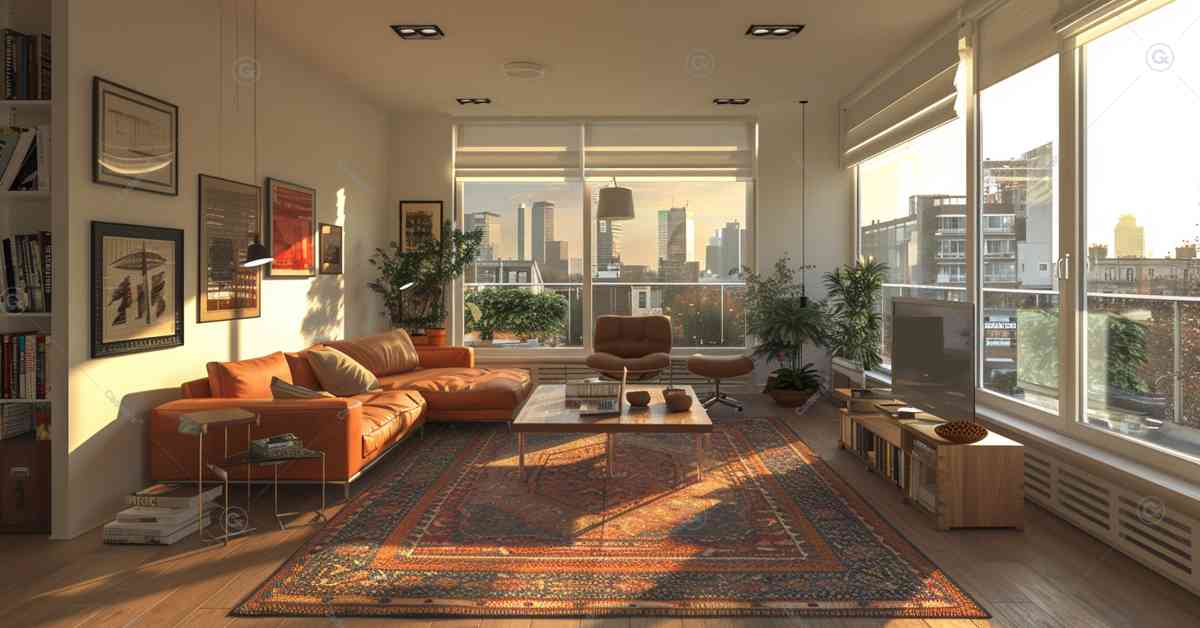
Embracing Geometric Symmetry
One of the most recognizable features of Art Deco design is its emphasis on bold geometric shapes. Modern interior designers often incorporate this element by using symmetrical patterns in wallpapers, rugs, and tiling. These geometric patterns not only pay homage to the Art Deco era but also add a touch of elegance and structure to contemporary spaces. Design software like ArchiCAD and AutoCAD enables designers to create precise and complex patterns, ensuring that every detail aligns perfectly with the overall design vision.
Luxurious Materials and Rich Colors
Art Deco is renowned for its use of high-end materials such as ebony, marble, and gold leaf, which convey a sense of luxury and sophistication. In modern interior design, these materials are often used in focal features like statement furniture pieces, light fixtures, and decorative accents. Additionally, the rich color palette typical of Art Deco—featuring deep greens, bold blacks, and striking golds—is employed to create dramatic, yet inviting environments. These elements are strategically used in spaces like executive offices, luxury boutiques, and upscale restaurants, where making a strong visual impact is key.
Integration in Modern Settings
The application of Art Deco elements extends beyond residential spaces to commercial and public interiors. Modern restaurants, for instance, might incorporate Art Deco-inspired bar fronts or glamorous lighting fixtures to evoke a sense of 1920s glamor, while still maintaining a modern vibe. Similarly, contemporary hotels use Art Deco designs in their lobbies and suites to create a distinctive atmosphere that appeals to guests looking for unique and immersive experiences.
Case Studies
Notable examples of Art Deco’s integration into modern interior design can be seen in projects like the renovation of historical buildings where original Art Deco features are preserved and blended with modern design elements. For example, a famous Art Deco building in New York was recently refurbished to include contemporary amenities while retaining its iconic facade and interior motifs. Such projects highlight the versatility of Art Deco elements in adapting to current trends and technologies.
Through these methods, modern interior designers successfully bridge the gap between historical aesthetics and contemporary functionality, proving that the style’s influence is not only preserved but also invigorated in today’s architectural landscape. This blending of past and present ensures that Art Deco remains a cherished and influential style in the field of interior design.
Art Deco Elements in Modern Interior Design
In the contemporary realm of interior design, the timeless elegance of Art Deco architecture is experiencing a vibrant revival. Modern designers adeptly merge iconic Art Deco elements—characterized by bold geometric patterns, rich textures, and luxurious materials—with cutting-edge design trends to create spaces that are both visually striking and highly functional. This section examines how these historical elements are adapted to suit the demands and aesthetics of today’s interior architecture, emphasizing their role in enhancing modern environments.
Embracing Geometric Symmetry
A key aspect of Art Deco’s appeal lies in its symmetrical and geometric motifs, which are extensively utilized in modern interior design projects. Today’s interior designers and architects harness advanced 3D modeling software, such as ArchiCAD and SketchUp, to incorporate these precise, intricate patterns into everything from lavish flooring designs to intricate ceiling details. This not only pays homage to Art Deco’s rich artistic legacy but also aligns with contemporary trends focusing on structured beauty and harmony within spaces.
Luxurious Materials and Rich Colors
Art Deco’s signature use of opulent materials like marble, brass, and lacquer finds new expression in today’s design world. Modern interior designers blend these luxurious elements with the latest innovations in material technology to create spaces that are as durable as they are decadent. The rich, vibrant color palettes of Art Deco—deep blues, radiant golds, and lush greens—are particularly effective in settings like boutique hotels and executive business lounges, where they evoke a sense of grandeur and timeless elegance.
Seamless Integration in Contemporary Settings
The adaptability of Art Deco design elements is evident in their seamless integration into both residential and commercial interiors. Modern restaurants, for instance, might feature Art Deco-inspired elements such as stylized lighting fixtures and ornate furnishing details that captivate patrons with a nostalgic yet contemporary ambiance. In residential settings, designers employ Art Deco motifs in decor items, furniture, and layout to create unique, personalized living spaces that reflect both historical appreciation and modern chic.
Case Studies Highlighting Modern Adaptations
Notable modern projects that demonstrate the integration of Art Deco elements include the renovation of historical buildings where designers preserve iconic Art Deco facades while updating the interiors with modern technologies and design principles. These projects not only highlight the versatility and enduring appeal of Art Deco design but also serve as benchmarks for sustainability and innovation in the field of modern architecture and interior design.
By weaving these classic design elements through the fabric of contemporary style, modern interior designers ensure that Art Deco remains a dynamic and influential force in the world of architecture and interiors. This strategic incorporation not only enriches the visual landscape but also enhances the functionality of spaces, proving that historical styles can effectively meet contemporary needs and preferences.
Technological Advancements Supporting the Revival of Art Deco
The resurgence of Art Deco in modern interior design is not just a nod to historical aesthetics but also a testament to the advanced technological tools that enable its revival and adaptation. Today’s interior designers and architects rely heavily on state-of-the-art 3D modeling software and CAD tools to reimagine and refine Art Deco’s distinctive elements for contemporary applications. This section delves into how these technological advancements facilitate the meticulous integration of Art Deco design into modern spaces.
Leveraging 3D Modeling and CAD Software
3D modeling tools like ArchiCAD, AutoCAD, and SketchUp have revolutionized the field of interior design and architecture, allowing for precision and creativity that was unimaginable in the past. These tools enable designers to create detailed visualizations of spaces that incorporate Art Deco features with an unprecedented level of accuracy. For instance, intricate geometric patterns and complex layouts can be designed and adjusted digitally before any physical work begins, minimizing errors and ensuring that the end result aligns perfectly with the envisioned design.
Enhancing Design Accuracy and Client Visualization
The use of CAD software not only enhances the accuracy of architectural drawings but also improves client consultations. Through detailed 3D renderings and virtual tours, clients can visualize how Art Deco elements will be incorporated into their spaces, facilitating better decision-making and customization. This technology bridges the gap between client expectations and the final product, ensuring satisfaction and streamlining the design process.
Innovating with New Materials and Techniques
Advancements in material science and digital fabrication techniques also play a crucial role in the modern revival of Art Deco. Designers now have access to a wider range of materials that mimic the luxurious finishes typical of the Art Deco period, such as synthetic marbles and eco-friendly metals, which are both sustainable and cost-effective. Additionally, digital fabrication techniques such as laser cutting and 3D printing allow for the creation of intricate decorative elements and furniture that stay true to Art Deco’s elaborate aesthetics but with modern twists.
Case Studies of Technology-Driven Art Deco Projects
Several high-profile projects highlight the successful integration of technology and Art Deco design. For example, a recently completed luxury hotel features a lobby where traditional Art Deco motifs, produced through digital fabrication techniques, blend seamlessly with modern minimalist decor, creating a unique and appealing environment. Another case is a corporate office where advanced CAD simulations were used to integrate Art Deco elements into the building’s facade and interior spaces, enhancing its historic character while upgrading its functionality for contemporary use.
By harnessing these technological innovations, modern interior design not only pays homage to the artistic legacy of Art Deco but also propels it into the future. These advancements ensure that the elegance and drama of the Art Deco style continue to enrich modern architectural projects, merging the best of past and present design practices.
The Role of Minimalism and Other Modern Movements in Art Deco Design
The integration of Art Deco with modern design movements such as minimalism represents a fascinating convergence of historical richness and contemporary simplicity. This blend not only revitalizes Art Deco elements with a fresh perspective but also aligns them with current trends in interior design and architecture. This section explores how minimalism, along with other modern design philosophies like human-centered and user-centered design, complements and contrasts with Art Deco to create innovative, functional spaces.
Integrating Minimalism with Art Deco
Minimalism in interior design emphasizes simplicity, functionality, and the use of space, which at first may seem at odds with the ornamental and lavish nature of Art Deco. However, modern designers skillfully merge these two styles by selecting standout Art Deco features—such as bold geometric shapes and luxurious materials—and incorporating them into minimalist layouts. This approach allows the Art Deco elements to serve as focal points without overwhelming the space, aligning with the minimalist ethos of ‘less is more’. The strategic use of clean lines and uncluttered spaces helps highlight the intricate Art Deco details, making them even more striking.
Human-Centered and User-Centered Design
Modern architecture and interior design increasingly focus on human-centered and user-centered design principles, which prioritize the needs and comfort of users in the design process. Art Deco elements can enhance these design approaches by adding aesthetic value that contributes to the overall usability and enjoyment of a space. For instance, ergonomic Art Deco-inspired furniture combines historical design elements with modern comfort, and decorative Art Deco features are used in ways that also improve user experience, such as acoustically optimized decorative panels in public and commercial settings.
Sustainable Design Practices
Sustainability is another critical aspect of contemporary design that intersects with the use of Art Deco motifs. Modern designers are finding ways to incorporate Art Deco styles using eco-friendly materials and energy-efficient methods. Recycled materials that mimic the look and feel of traditional Art Deco substances like glass and metal are increasingly popular, allowing designers to achieve the aesthetic appeal of Art Deco while adhering to sustainable design principles. Moreover, modern updates to Art Deco-style buildings often include green technologies, such as solar panels and energy-efficient lighting, proving that style and sustainability can coexist beautifully.
Case Studies of Modern Art Deco Implementations
Several noteworthy projects exemplify the successful integration of Art Deco with modern design principles. A notable example includes a high-end condominium where minimalist design principles are used to frame original Art Deco features, creating a balance that is both visually appealing and functionally sound. Another example is a tech company’s headquarters where Art Deco-inspired design elements are incorporated into user-friendly workspaces designed to boost creativity and productivity.
By weaving together Art Deco and modern design movements, designers not only preserve a cherished historical style but also adapt it to meet contemporary needs and tastes. This fusion ensures that Art Deco remains relevant and vibrant in today’s design landscape, continually influencing new generations of architects and interior designers.
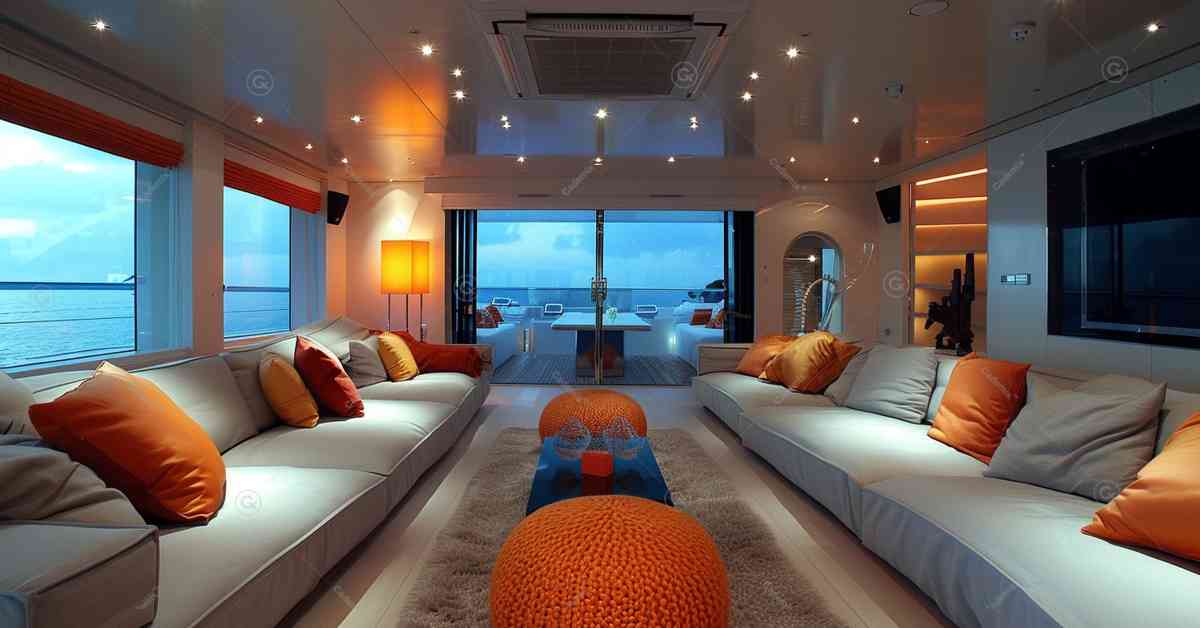
Sustainable and Human-Centered Design Approaches in Art Deco Revival
In the contemporary landscape of architecture and interior design, sustainability and human-centered design are not just trends but essential components that define successful projects. Integrating these modern approaches with Art Deco design not only respects historical authenticity but also ensures that these spaces meet today’s environmental and societal needs. This section discusses how sustainable practices and human-centered design principles are being woven into the revival of Art Co elements to create spaces that are both environmentally responsible and deeply attuned to human needs.
Emphasizing Sustainability in Art Deco-Inspired Designs
Sustainable design in modern Art Deco revival projects focuses on utilizing eco-friendly materials and implementing energy-efficient solutions while maintaining the style’s luxurious and ornate characteristics. Designers are increasingly opting for recycled metals that replicate the sleek, polished look of traditional Art Deco fixtures, and bio-based polymers that offer a sustainable alternative to the plastics and resins used in Art Deco interiors. Additionally, modern renovations of Art Deco buildings often include upgrading to LED lighting and energy-efficient HVAC systems, which reduce the environmental impact while preserving the architectural integrity of the era.
Human-Centered Art Deco Environments
Human-centered design in the context of Art Deco focuses on creating spaces that are not only visually appealing but also comfortable and functional for users. This approach involves ergonomic research and design to modify traditional Art Deco furniture and layouts to meet contemporary ergonomic standards, enhancing comfort without sacrificing style. Moreover, designers incorporate adaptive reuse principles in Art Deco settings, transforming historic spaces into functional modern environments that support contemporary uses while celebrating their Art Deco heritage.
Integrating User-Centered Design Techniques
User-centered design complements the human-centered approach by ensuring that modern adaptations of Art Deco interiors are tailored to the users’ specific needs and preferences. This might involve customizing spaces for accessibility, using adaptive technologies that blend seamlessly with Art Deco aesthetics, or designing interactive Art Deco-inspired elements that enhance user engagement and satisfaction. For instance, touchscreen interfaces for smart homes can be encased in Art Deco-styled panels, merging modern technology with vintage design.
Case Studies Showcasing Sustainability and Design Innovation
Several innovative projects exemplify the successful integration of sustainable and human-centered principles in Art Deco revivals. A notable example is a commercial building where traditional Art Deco facades are preserved but the interiors are completely retrofitted with sustainable materials and technologies, proving that historical styles can adapt to modern environmental standards. Another example is a community center, originally built in the Art Deco period, which has been redesigned to provide accessible and multifunctional spaces that cater to a diverse user base, demonstrating the versatility and enduring relevance of Art Deco design.
By incorporating sustainable design and human-centered principles into Art Deco revivals, designers not only enhance the functional value of these spaces but also contribute to the broader goals of environmental stewardship and social responsibility. This thoughtful integration ensures that Art Deco’s legacy continues to evolve and adapt, providing timeless design solutions that meet the demands of the 21st century.
Practical Applications in Today’s Architecture: Art Deco Meets Modern Design
The influence of Art Deco in today’s architecture illustrates a seamless blend of vintage charm and contemporary functionality, showcasing how historical elements can be revitalized to meet the needs of modern usage. This section explores the practical applications of Art Deco design in various architectural contexts, highlighting how these elements are implemented in residential, commercial, and public spaces to enhance aesthetic appeal and functionality.
Residential Revivals with Art Deco
In residential interior design, Art Deco is making a comeback through the incorporation of its iconic elements into homes that seek a touch of glamour and sophistication. Interior designers are adeptly using Art Deco’s rich color palettes, luxurious materials, and geometric patterns to create distinctive living spaces. Modern 3D-planning software like AutoCAD and SketchUp enables precise visualization and customization of Art Deco details, ensuring they fit perfectly into contemporary layouts while providing a nod to the style’s opulent past.
Commercial Spaces Embracing Art Deco
The commercial sector has embraced Art Deco to create unique, memorable environments that attract and delight visitors. From boutique hotels to upscale restaurants, the incorporation of Art Deco elements such as elaborate lighting fixtures, bold wall murals, and ornate furnishing details enhances brand identity and customer experience. Designers leverage these elements to craft spaces that stand out in competitive markets, employing project management and design innovation to ensure these environments are not only beautiful but also highly functional.
Art Deco in Public and Institutional Architecture
Public and institutional buildings are also incorporating Art Deco features to add a sense of historical depth and prestige. Libraries, government buildings, and educational institutions often use Art Deco motifs in their facades and interiors to project authority and tradition while modernizing their facilities for contemporary use. This application demonstrates how Art Deco can be both decorative and symbolic, enhancing public spaces with its distinctive style.
Cross-Functional Team Collaboration in Design Projects
The integration of Art Deco elements into modern architecture often requires the expertise of cross-functional teams, including architects, interior designers, and engineers. Collaboration is crucial to address the challenges of blending historical aesthetics with modern building standards and technologies. Teams work together to ensure that Art Deco elements are not only visually appealing but also meet current codes and user needs, exemplifying effective project management and client consultation processes.
Case Studies Demonstrating Art Deco’s Versatility
Illustrative of Art Deco’s versatility, one notable project is a high-end retail space in a major city where Art Deco designs enhance the shopping experience by creating an inviting and luxurious atmosphere. Another example is an office complex where Art Deco aesthetics are used to design common areas that foster a creative and inspiring work environment, proving that historical styles can effectively contribute to modern architectural solutions.
These practical applications of Art Deco in today’s architecture underscore the style’s enduring appeal and adaptability. By skillfully integrating Art Deco with contemporary design elements, today’s architects and designers continue to celebrate and evolve this iconic style, ensuring its relevance in enhancing both the functionality and aesthetic of modern spaces.
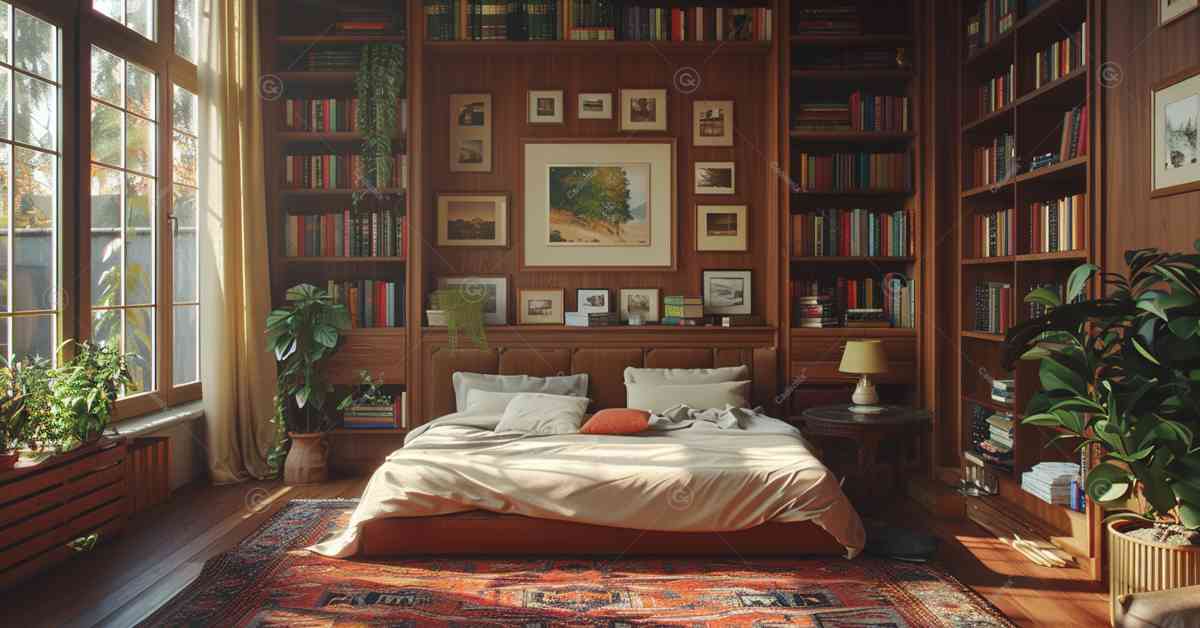
Conclusion: The Enduring Legacy of Art Deco in Contemporary Design
The reintegration of Art Deco elements into modern interior design and architecture not only revives a rich artistic legacy but also demonstrates the timeless appeal and versatility of this distinct style. This concluding section reflects on the sustained relevance of Art Deco in today’s design landscape, forecasting its future influence on both aesthetic and practical aspects of architectural projects.
A Timeless Fusion of Past and Present
Art Deco’s ability to blend seamlessly with contemporary design trends such as minimalism, sustainability, and user-centered design highlights its adaptability and enduring charm. Modern technology, including advanced CAD tools and 3D modeling software, has played a pivotal role in this revival, enabling designers to explore innovative ways to incorporate Art Deco’s ornate details into various modern contexts. These tools help preserve the authenticity of the style while adapting it to meet current functional requirements, ensuring that Art Deco remains relevant in the digital age.
Innovation and Inspiration
As we look to the future, the influence of Art Deco is set to continue and expand within the design world. The style’s emphasis on craftsmanship, luxury, and detail offers a rich source of inspiration for designers seeking to create unique and compelling spaces. Furthermore, the ongoing interest in blending historical styles with modern technologies suggests that Art Deco will continue to inspire innovation in material use, environmental sustainability, and spatial aesthetics.
Art Deco’s Role in Shaping Future Trends
The revival of Art Deco in modern settings encourages a broader reflection on how we incorporate historical influences into contemporary design. It challenges designers and architects to think creatively about how styles can be both preserved and adapted to fit new contexts and uses. This ongoing dialogue between the old and the new not only enriches the field of design but also ensures that heritage styles like Art Deco evolve rather than remain static.
Encouraging Professional Exploration
For professionals in the field of architecture and interior design, the resurgence of Art Deco presents numerous opportunities for exploration and application in both commercial and residential projects. It serves as a reminder of the importance of historical context in design decisions and the potential for past aesthetics to enhance modern functionality and appeal.
Call to Action
As we continue to push the boundaries of design and architecture, let us draw on the rich legacy of Art Deco to inspire future projects. We encourage interior designers, architects, and students alike to delve deeper into this style, exploring its potential to bring elegance, sophistication, and innovation to contemporary spaces. Whether you are redesigning a boutique hotel or planning a new urban development, consider how Art Deco elements can add value and distinction to your work.
By reflecting on the enduring legacy of Art Deco, we acknowledge its profound impact on the past and its promising potential for the future, ensuring that this historic style continues to influence modern design in dynamic and sustainable ways.
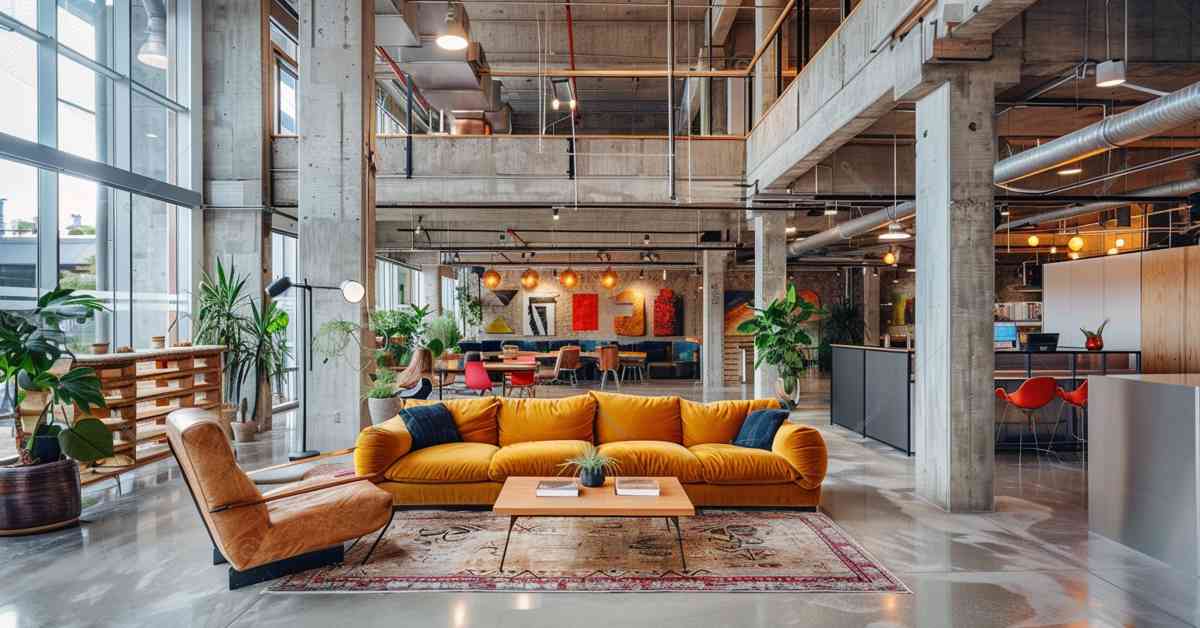
About the Author
Samareh Ghaem Maghami is a distinguished figure in the fields of interior design and event management, with an impressive educational background in painting from Iran and ongoing postgraduate studies in Austria. With over six years of experience as an interior decorator and three years in event management, Samareh has developed a keen expertise in creating visually compelling and functional spaces. She is also an active member of Cademix, an organization known for enhancing professional skills and networking in the tech and creative sectors.
Her extensive experience and academic pursuits empower her to blend practical knowledge with innovative design principles, making her work both unique and forward-thinking. Readers interested in exploring the convergence of historical art styles with modern design elements can gain valuable insights from her articles. For collaboration inquiries or to read more of Samareh’s work, please feel free to reach out through her professional network at Cademix Institute of Technology.
E-mail: sam.gh.maghami@gmail.com
E-mail: samareh.ghaem-maghami@cademix.org
LinkedIn: https://www.linkedin.com/in/samareh-ghaem-maghami
Xing: https://www.xing.com/profile/Samareh_GhaemMaghami
Related Keywords to this article
Art Deco design trends, Contemporary Art Deco interiors, Modern Art Deco architecture, Historical architecture revivalLuxury interior design, Geometric patterns in design1920s design influences, Modern minimalist design, Sustainable Art Deco designs3D modeling in interior design, Art Deco renovation projectsIntegrating Art Deco with modernism, Art Deco furniture in modern settingsInterior design innovation, Architectural design software, Eco-friendly Art Deco materials, Art Deco color schemes, Vintage and modern design fusion, Art Deco design elements, Art Deco-inspired commercial interiors, Art Deco architecture, modern interior design, interior design.
Art Deco architecture, historical architecture, designers, Zaha Hadid, Hadid architect, interior architecture, design innovation, room designer, restaurant interior design, architecture office, 3D modeling, ArchiCAD, 3D-Planning Software, architectural drawings, minimalism, modern architecture, human-centered design, user-centered design, sustainable design, human-centered design, service design, material selection, interior design, architect, designer, project management, design innovation, creative vision, cross-functional team collaboration, detail-oriented, interior design, client consultation, project management.

